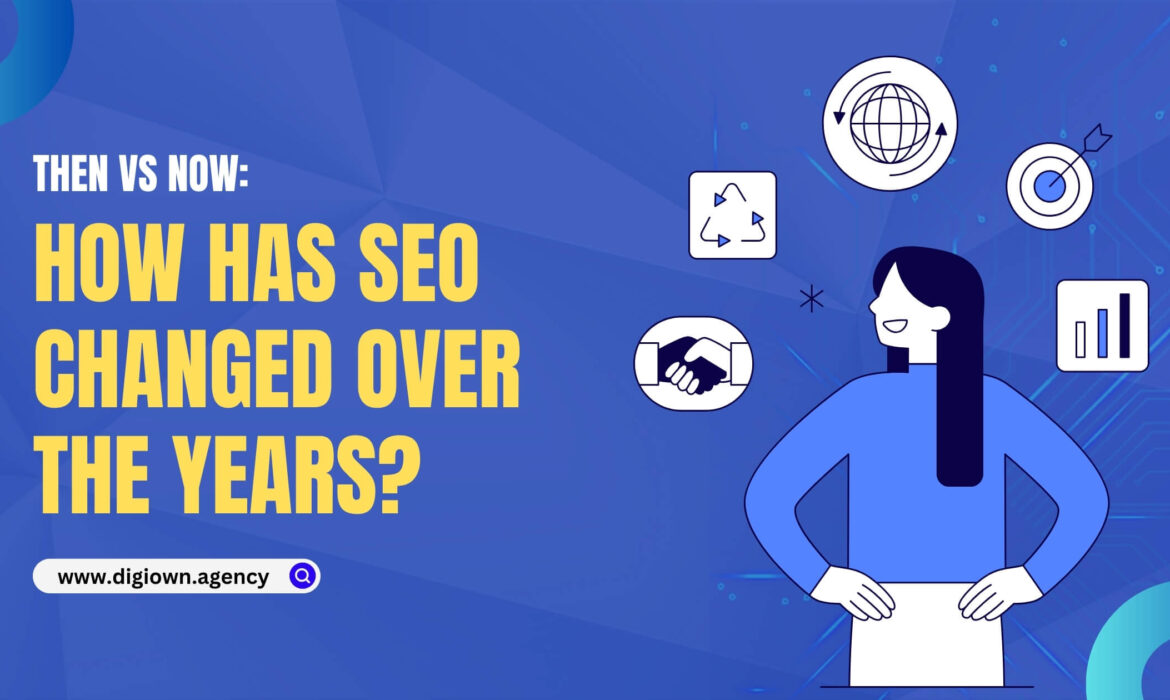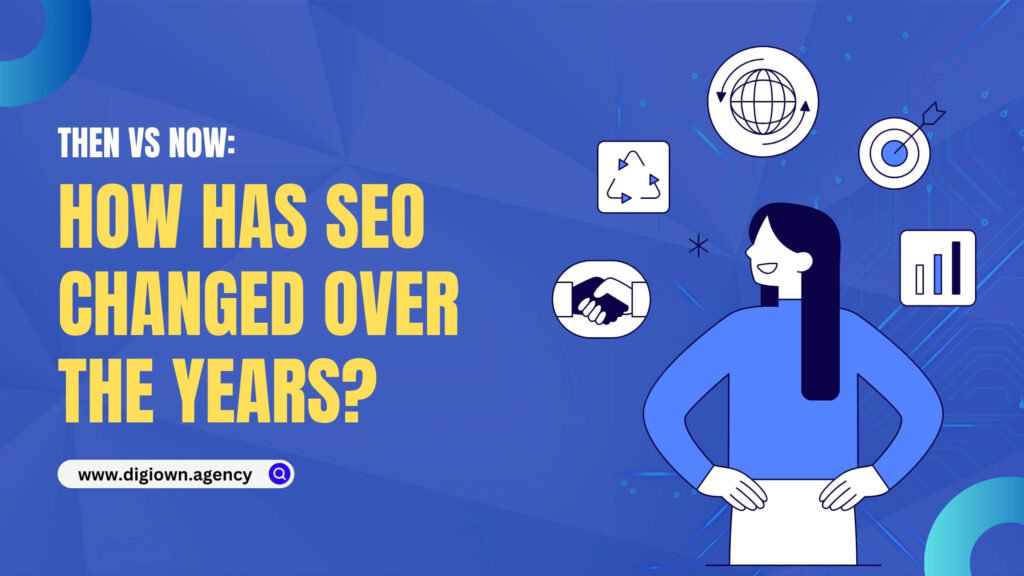

Table of Contents
- 1 Introduction
- 2 The Evolution of Search Engine Algorithms
- 3 The Rise of Mobile SEO
- 4 The Importance of User Experience (UX)
- 5 Content Quality Over Keywords
- 6 Local SEO Becomes Crucial
- 7 Voice Search Optimization
- 8 Visual Search and SEO
- 9 The Integration of Social Media and SEO
- 10 The Importance of Link Building
- 11 Predictions for the Future of SEO
- 12 Conclusion
Introduction
Search Engine Optimization (SEO) has dramatically transformed over the last 15 years. As the backbone of digital marketing, understanding how has SEO changed in recent years is crucial for marketers, businesses, and content creators aiming to stay ahead in a dynamic digital landscape.
The Evolution of Search Engine Algorithms

Early 2000s SEO Practices
In the early days of SEO, tactics such as keyword stuffing and focusing on the sheer quantity of backlinks were prevalent. These strategies aimed to exploit search engine algorithms that were less sophisticated than today’s standards. Websites often focused on placing as many keywords as possible into their content without considering readability or user experience. Backlinks, regardless of their quality, were heavily pursued to boost search engine rankings.
Introduction of Google’s Game-Changing Algorithms
The landscape began to change with Google’s introduction of the Panda update in 2011 and the Penguin update in 2012. The Panda update targeted low-quality content, penalizing sites with thin content, duplicate content, and content farms. The Penguin update focused on link quality, penalizing sites using manipulative link practices such as link schemes and unnatural linking patterns. These updates marked a significant shift towards quality and relevance, emphasizing the importance of content and ethical link-building practices.
The Role of Artificial Intelligence in SEO
AI is revolutionizing SEO by enhancing how search engines understand and rank content. Google’s RankBrain, introduced in 2015, uses machine learning to interpret the context of user queries, improving the relevance of search results. AI technologies allow for more personalized search experiences, predicting what information users might find helpful based on previous behaviors. This personalization means that search results can vary for different users based on their search history, location, and preferences, making SEO strategies more complex and targeted.
The Rise of Mobile SEO

The Impact of Mobile-First Indexing
Google’s shift to mobile-first indexing in 2018 emphasized the importance of mobile-friendly websites. This change reflected the growing number of internet users accessing the web via mobile devices, making mobile optimization a critical SEO factor. Mobile-first indexing means that Google predominantly uses the mobile version of the content for indexing and ranking, highlighting the necessity of a seamless mobile user experience.
Optimization for Mobile Devices
Today, ensuring a site is responsive and mobile-friendly is not just a recommendation but a necessity. It affects not only user experience but also search ranking. Responsive design, fast loading times, and easy navigation on mobile devices are essential components of mobile optimization. Mobile usability, including touch-friendly navigation and readable text, has become a crucial element of SEO.
The Importance of User Experience (UX)
Page Speed
As part of enhancing user experience, the speed at which pages load has become a critical ranking factor. Slow-loading pages can lead to high bounce rates and lower rankings. Google’s PageSpeed Insights and Core Web Vitals metrics help webmasters identify and improve page speed issues, making it a key area of focus for SEO.
Mobile Usability
Alongside speed, mobile usability—ensuring content is readable and accessible on mobile devices—has become crucial. Factors such as touch-friendly buttons, easy navigation, and content that adjusts to different screen sizes are vital for providing a good user experience on mobile devices.
Safe Browsing and Security
Ensuring a website is secure and free from malicious software is now integral to SEO rankings, reflecting Google’s commitment to safe browsing. HTTPS has become a standard, and sites without it are flagged as “not secure,” which can deter users and impact rankings. Google’s Safe Browsing tool helps identify and mitigate security issues.
Content Quality Over Keywords
From Keyword Density to Search Intent
The focus has shifted from mere keyword density to understanding and matching search intent. High-quality content that satisfies user intent tends to rank higher than keyword-stuffed content. This shift means that content creators must understand the needs and questions of their audience and provide comprehensive, valuable content that addresses those needs.
Local SEO Becomes Crucial
The Rise of Local Search
Local SEO has become essential, especially for businesses serving specific geographical areas. Optimizing for local search involves specific strategies like managing local listings, optimizing Google My Business profiles, and using local keywords. Local SEO helps businesses appear in local search results and on Google Maps, making it easier for local customers to find them.
Voice Search Optimization
Preparing for the Voice-Activated Future
With the rise of voice-activated devices, optimizing for voice search requires understanding natural speech patterns and longer query phrases. Voice search queries tend to be more conversational and question-based, so optimizing content to answer these types of queries can help capture this growing segment of search traffic.
Visual Search and SEO
Integration of Image Recognition
Search engines now recognize images better, allowing them to play a significant role in SEO strategies, especially for e-commerce and visual content-heavy sites. Optimizing images with descriptive filenames, alt text, and structured data can enhance visibility in image search results.
The Integration of Social Media and SEO
Social Signals
While the direct SEO benefits of social media are debated, there’s no doubt that social media enhances content visibility and drives traffic, indirectly affecting SEO. Engaging with audiences on social media can increase brand awareness, drive website traffic, and generate backlinks, all of which can positively impact SEO.
The Importance of Link Building
Shift From Quantity to Quality
Today, the focus is on acquiring high-quality backlinks from reputable sites rather than the number of links, emphasizing the quality of connections over quantity. High-quality backlinks from authoritative sites signal to search engines that your content is trustworthy and valuable, improving your site’s rankings.
Predictions for the Future of SEO
Continual Adaptation to New Technologies
SEO is expected to keep evolving with technological advancements, particularly with the integration of AI and machine learning. Staying updated with these changes and adapting strategies accordingly will be crucial for maintaining and improving search rankings.
The Growing Importance of Ethics in SEO
As search engines become more sophisticated, the ethical implications of SEO practices, such as user privacy and data security, are coming to the forefront. Ethical SEO practices will become increasingly important as users and search engines demand transparency and integrity.
Conclusion
The last 15 years have seen profound changes in SEO, driven by advancements in technology and shifts in user behavior. Understanding how has SEO changed in recent years is crucial for anyone looking to leverage SEO effectively. Emphasizing quality content, user experience, and ethical practices will continue to be key to successful SEO strategies in the future.






